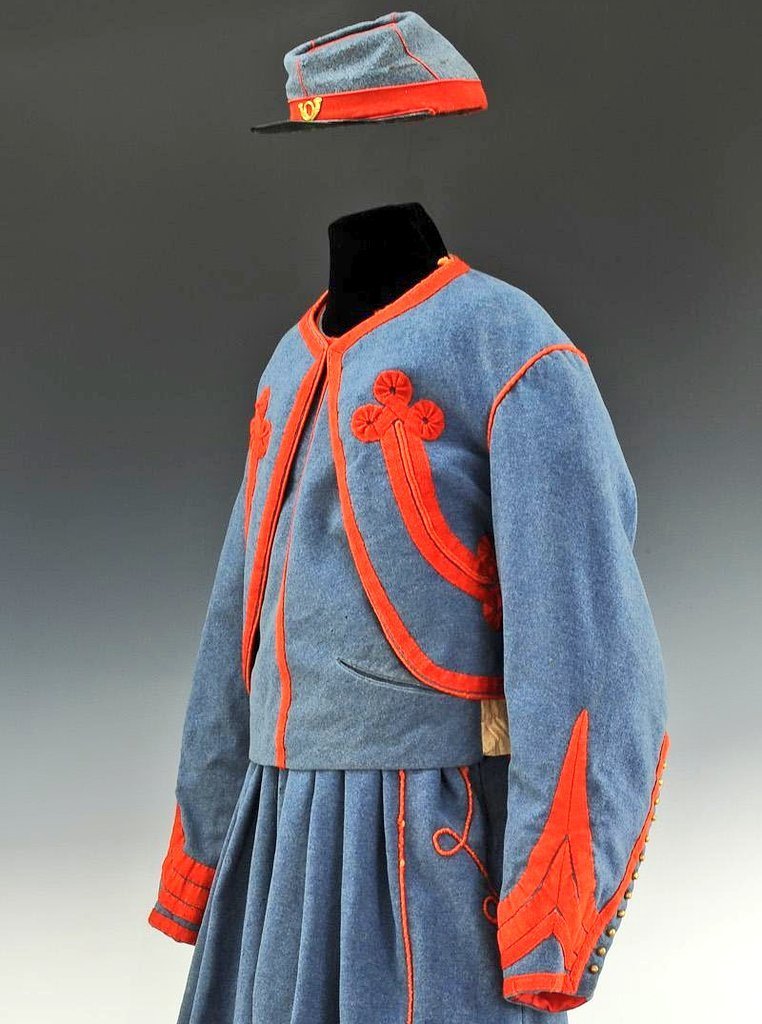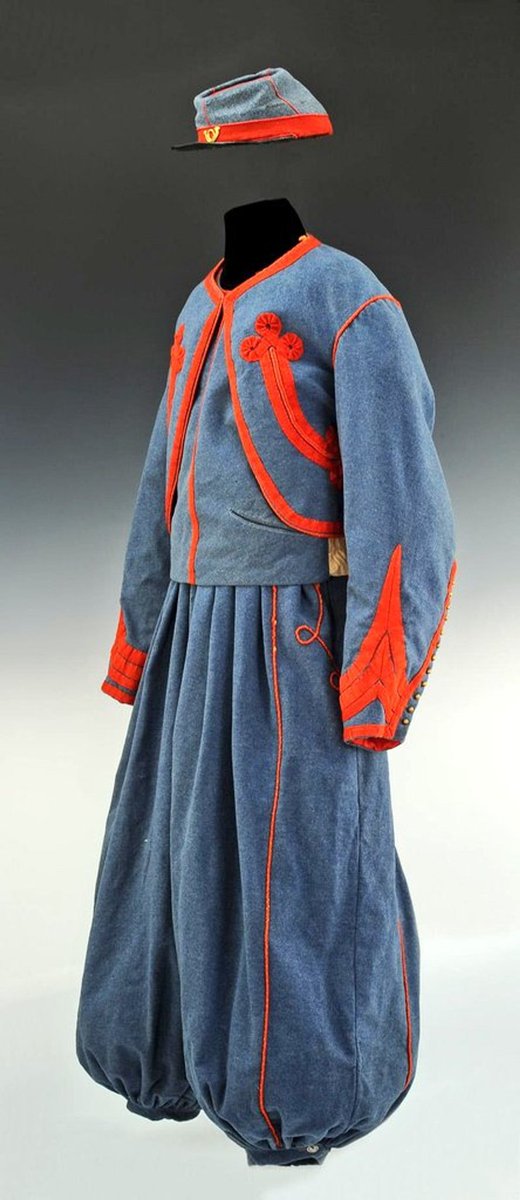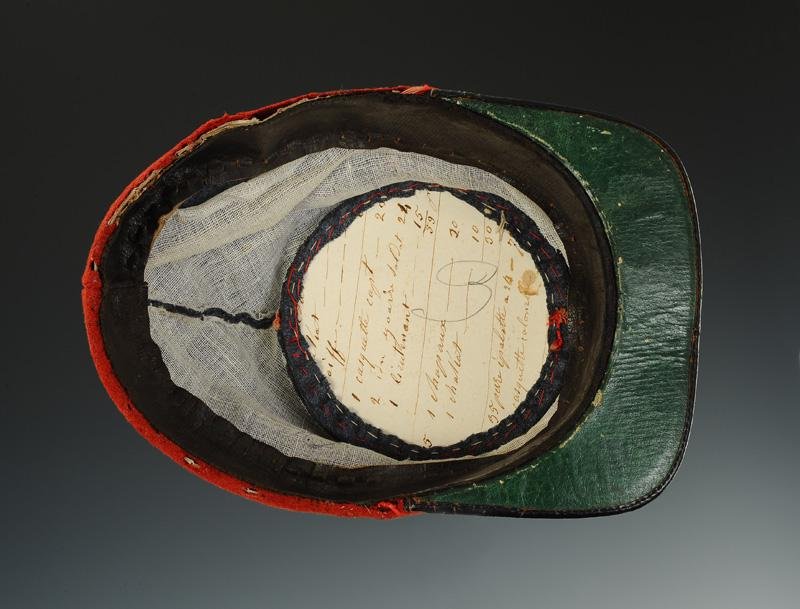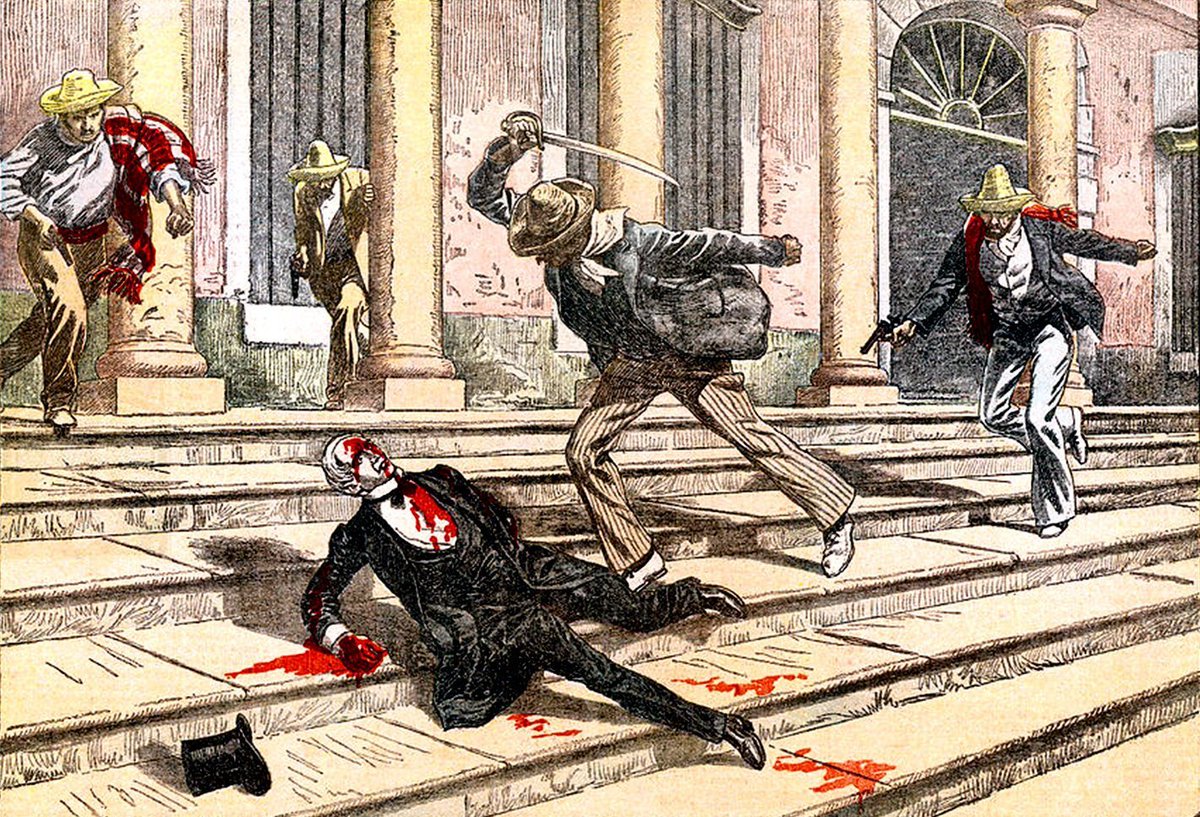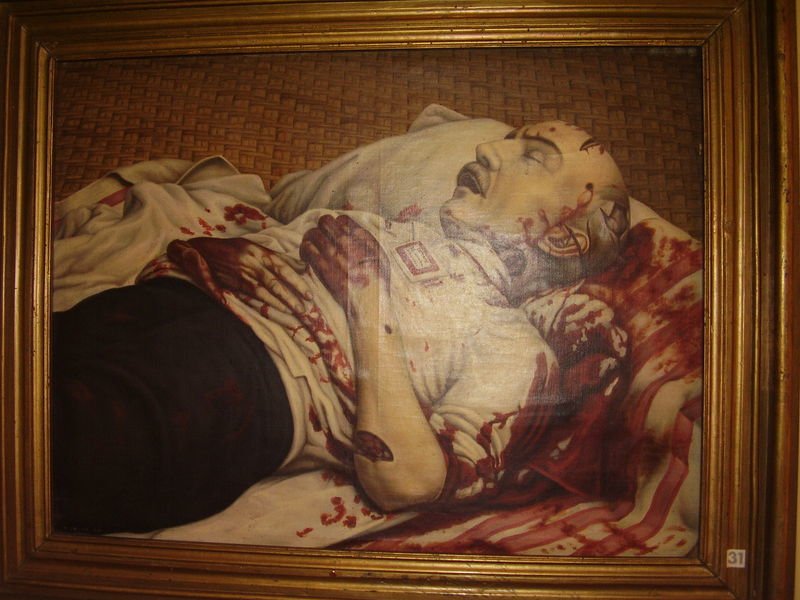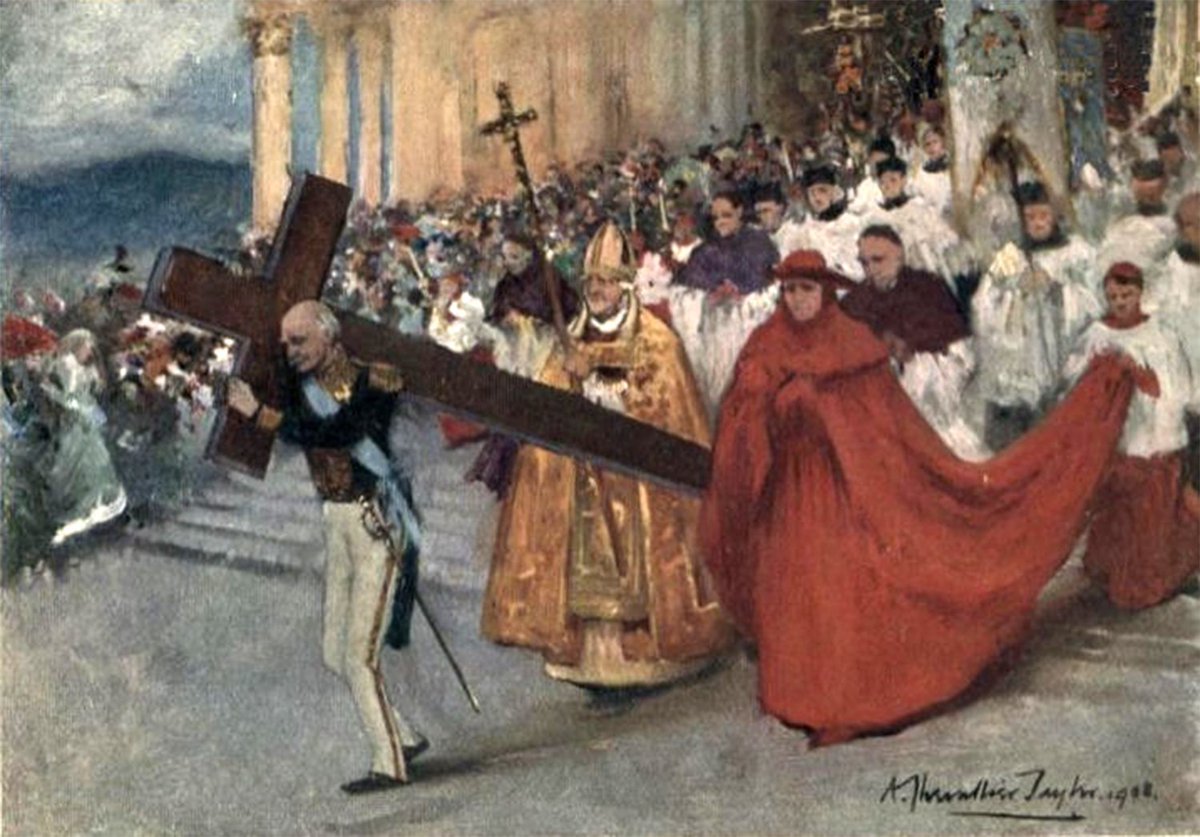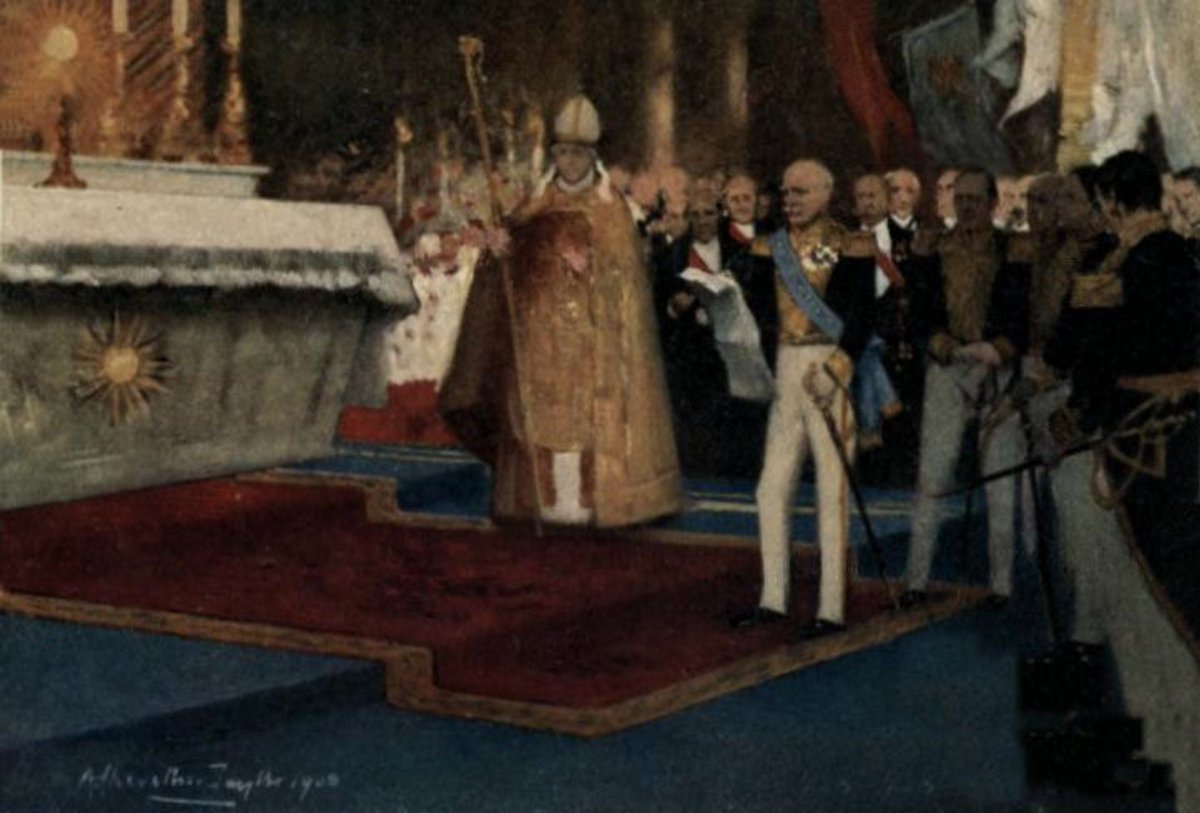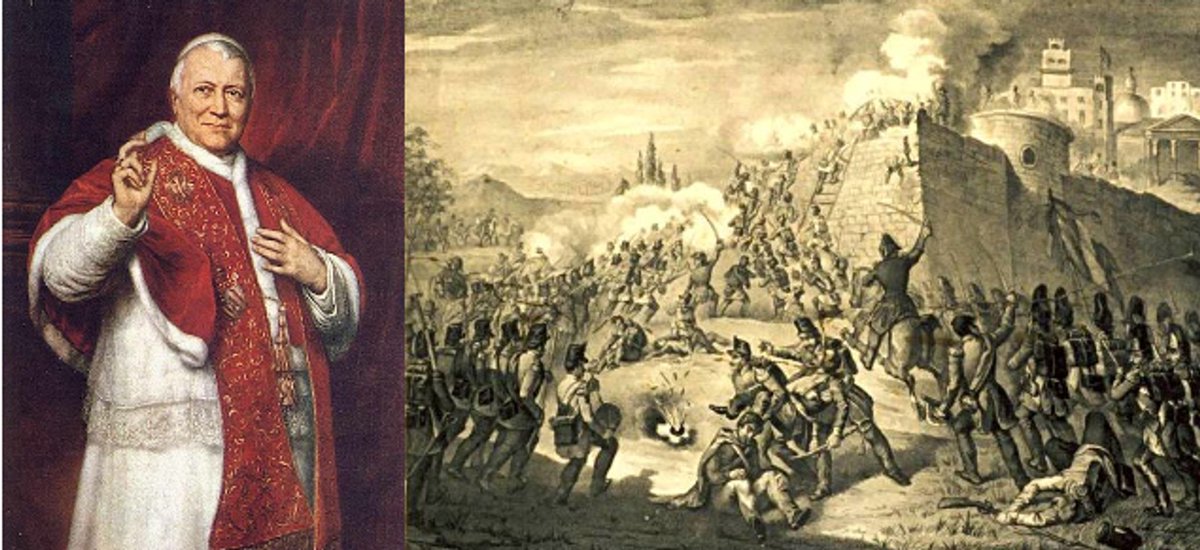On this day 163 years ago, Sep. 18, 1860. The Papal Army was defeated by the Piedmontese at the battle of Castelfidardo.
This loss, ensured a Papal States defeat in the 1860 campaign, which resulted in them losing the majority of their territory. A thread on the battle🧵🇻🇦
1/50
This loss, ensured a Papal States defeat in the 1860 campaign, which resulted in them losing the majority of their territory. A thread on the battle🧵🇻🇦
1/50

The battle was apart of the Italian unification wars. For the Papal States it was the defensive campaign of 1860. The Italians consider it apart of the “Expedition of the Thousand” a conflict which included the seizure of the Kingdom of the Two Sicily’s by Garibaldi.
2/50
2/50
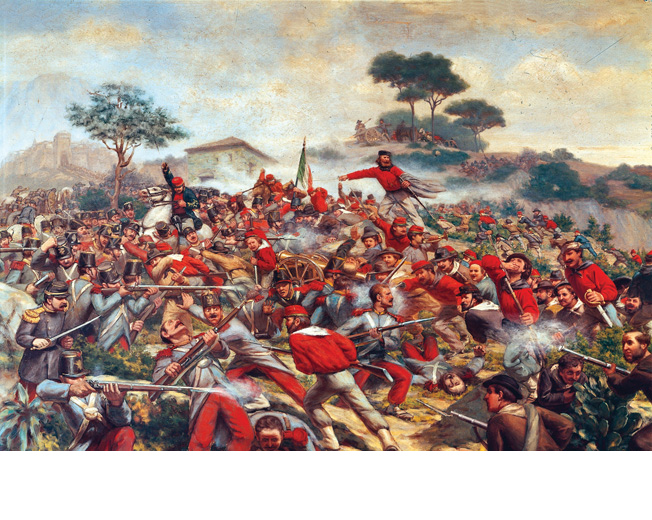
During this time period Italy was split up into 10 different states. The Kingdom of Sardinia-Piedmont however, wanted to unify all of Italy under their rule. In 1859 they sided with France during the Franco-Austrian war of 1859 in an attempt to gain more territory and
3/50
3/50
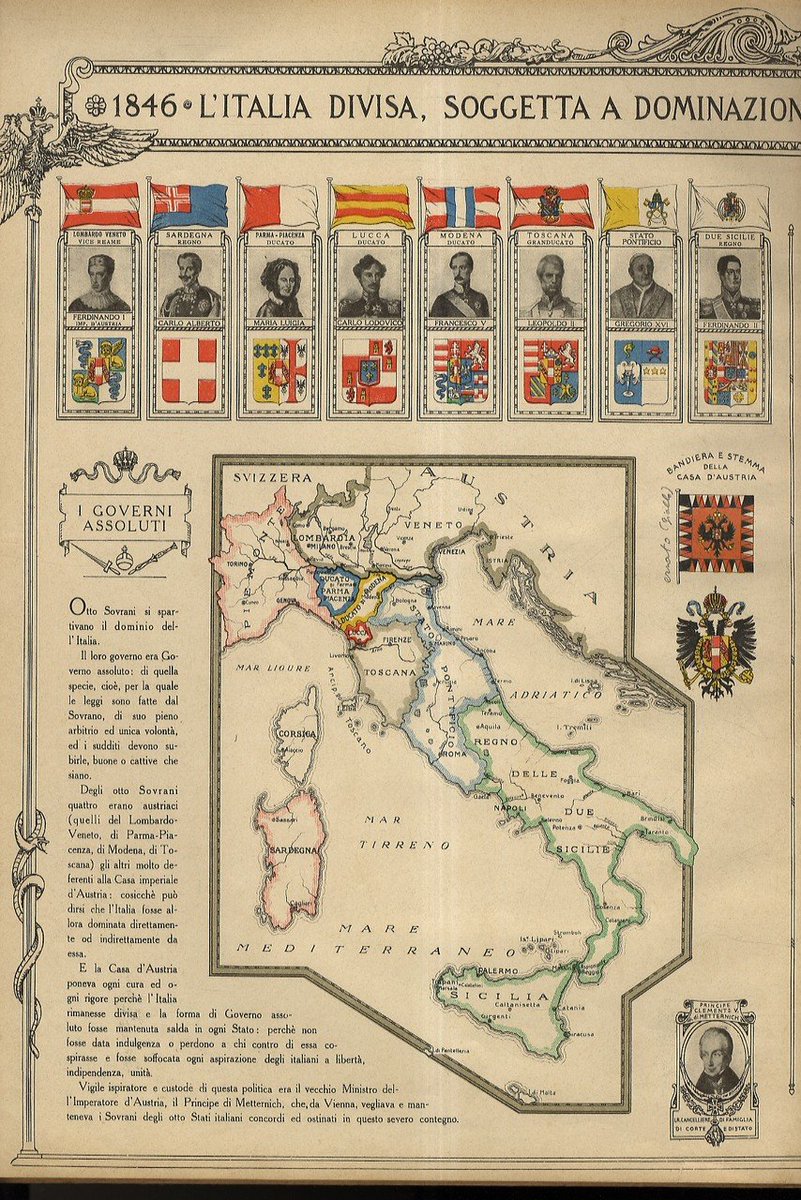
reduce Austrian influence on the peninsula.
The Austrians were defeated and Sardinia gained control of Lombardy and the Papal territory of Romagna. They then staged civil unrest in the neighboring Kingdoms of Parma, Moderna, and Tuscany. Their monarchies toppled and
4/50
The Austrians were defeated and Sardinia gained control of Lombardy and the Papal territory of Romagna. They then staged civil unrest in the neighboring Kingdoms of Parma, Moderna, and Tuscany. Their monarchies toppled and
4/50

Sardinia annexed their territories. The Kingdom of Sardinia now turned its eye toward the Papal States and the Kingdom of Naples.
In May of 1860 with Piedmontese support, Garibaldi and his followers began its invasion of the Kingdom of Naples. By Sep. the Naples had fallen
5/50


In May of 1860 with Piedmontese support, Garibaldi and his followers began its invasion of the Kingdom of Naples. By Sep. the Naples had fallen
5/50


Afraid that Garibaldi would get ahead of himself and march on Rome, thus inciting another conflict with Austria and France, the Sardian Prime Minister secretly met with with Napoleon III to ask for permission to seize the Papal States. So that they could unify Italy and
6/50
6/50

prevent Garibaldi from ransacking Rome. Napoleon III had promised Bl. Pius IX that he would defend the Papal States against any unjust aggression. However, behind the Pope’s back he agreed to let Sardinia take the Papal States with the exception of Rome and the Lazio region
7/50
7/50

Sardinia and the secret societies staged unrest in the northern territories of the Papal States. Bl. Pius IX however, was not willing to negotiate with Piedmont. Unwilling to let the Papal States remain Piedmont invaded the Papal States with 70,000 soldiers on Sep. 11 1860
8/50
8/50
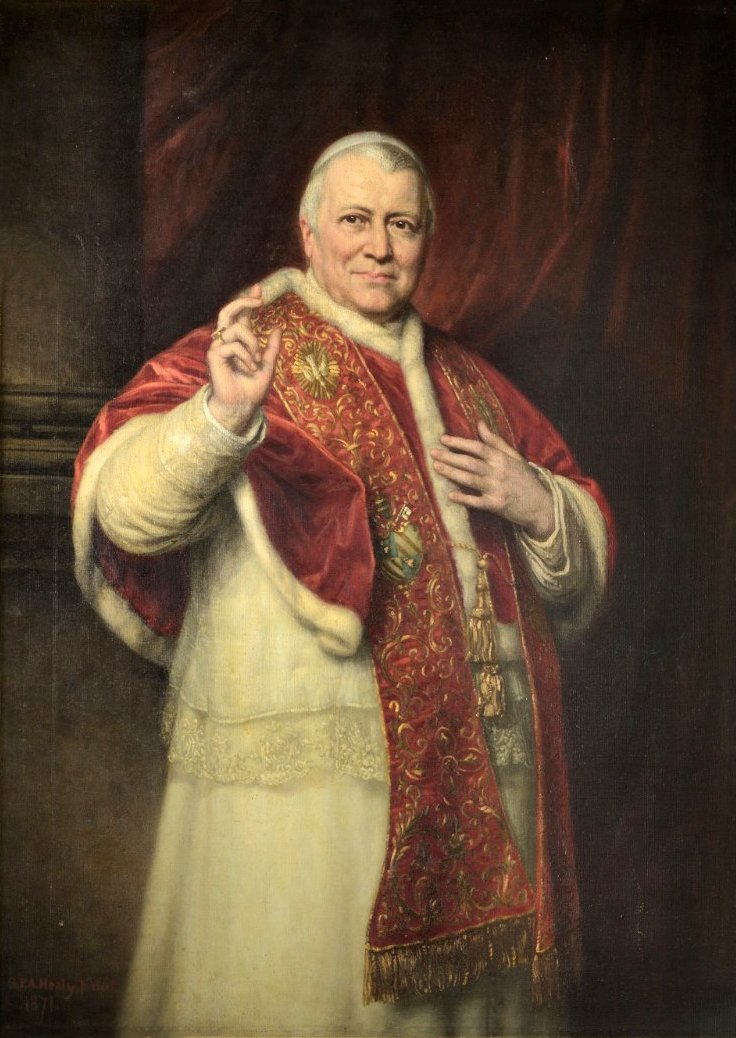
The only hope the Papal States had in winning was if Austria sent troops to reinforce the Papal Army through the Ancona port. In anticipation for these supposed reinforcements, the Papal plan was to have the majority of the Army move to the city and defend it from siege.
9/50
9/50

On Sep. 16 The Commander of the Papal Army, Christophe de Lamoricière, arrived in Loreto, a town which laid just 20 miles south of Ancona and contained the Holy House. From there he determined that the Italian IV Corps had set up a defensive line around the adjacent town
10/50


10/50


of Castelfidardo, which was directly on his route to Ancona. Going around wasn’t an option as the Italian V Corps was on his tail. He determined the best course of action was to push through the IV corps.
The following day a Brigade led by Colonel Pimodan, which was
11/50


The following day a Brigade led by Colonel Pimodan, which was
11/50


following the rear of Lamoricière’s forces arrived in Loreto, after marching 106 miles over several days with little rest. While the senior officers planned the battle the men prepared themselves for a fight. Col. Becdelievre, the Commander of the Franco-Belgian Battalion
12/50
12/50

(The unit that would later become the Papal Zouaves) said to his men
“Tomorrow, at this hour, several among us will have appeared before God. Now, you know that a man should be clean when he appears before Him. Let those who are not so go around to the chaplain.
13/50
“Tomorrow, at this hour, several among us will have appeared before God. Now, you know that a man should be clean when he appears before Him. Let those who are not so go around to the chaplain.
13/50

I have just left him myself” the men received Holy Communion the morning of the 17th and 18th.
Lamoricière’s plan was to split his 6800-man force into 3 columns. They would cross the Musone river (a river that separated Loreto and Castelfidardo) at 3 separate points.
14/50
Lamoricière’s plan was to split his 6800-man force into 3 columns. They would cross the Musone river (a river that separated Loreto and Castelfidardo) at 3 separate points.
14/50

The left column, commanded by Col. Pimodan would ford the right bank of the river and reach a collection of buildings known as the “Lower Farm” From there he would wheel left to the face the Italians left flank
Engaging them he would continue uphill acouple hundred meters
15/50


Engaging them he would continue uphill acouple hundred meters
15/50


to the “Upper Farm” and from there move to the summit of the hill. Which would allow him to block any Piedmontese forces from attacking the Papal left flank.
The center column led by Gen. Lamoricière, would ford the river a few hundred meters downstream from Pimodan
16/50


The center column led by Gen. Lamoricière, would ford the river a few hundred meters downstream from Pimodan
16/50


then wheel left and establish a reserve line for the first column.
The right column which was made up of primarily the baggage train, reserve artillery, and gendarmes would cross the river further downstream and make their way onto the road and head directly for Ancona.
17/50
The right column which was made up of primarily the baggage train, reserve artillery, and gendarmes would cross the river further downstream and make their way onto the road and head directly for Ancona.
17/50

The main objective of the battle wasn’t the defeat of the enemy but rather the diversion of Italian troops so that the majority of the Papal forces could make their way to Ancona.
A French priest described the scene of the morning of the 18th just before the Army set out
18/50
A French priest described the scene of the morning of the 18th just before the Army set out
18/50

“the scene worthy of the epoch of the Crusades, and which as a priest and a Frenchman, gave me the greatest consolation. At 4 o’clock Moriciere, Pimodan, and all the staff-officers, the guides, and the German regiments, the foreigns and natives, all received Holy Communion
19/50
19/50
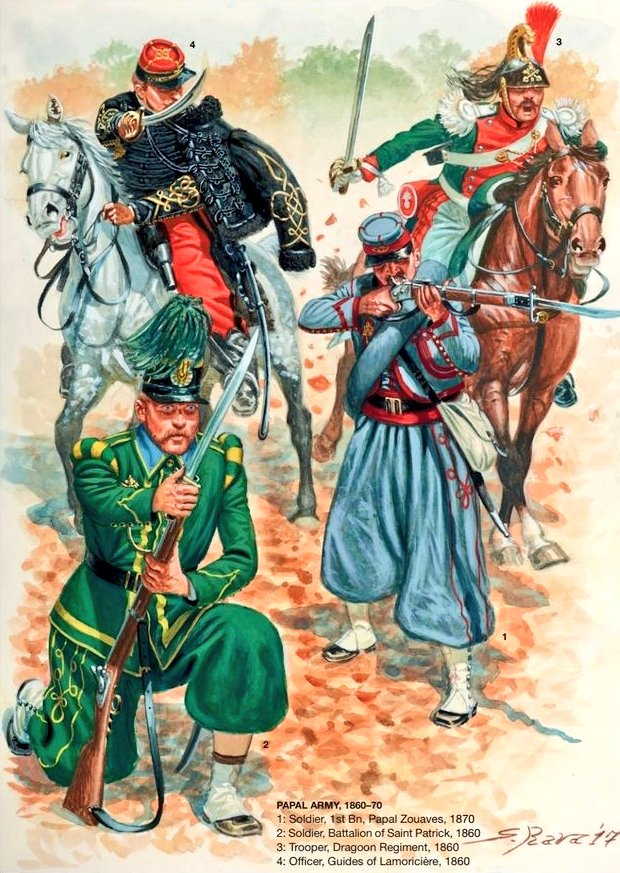
I saw the greater number of them prostrate in prayer…On the ramparts, towards the north side of the plain, perceiving a movement amongst the enemy’s troops, which seemed like a swarm of ants in the distance, the Franco-Belgians said to me;
20/50
20/50
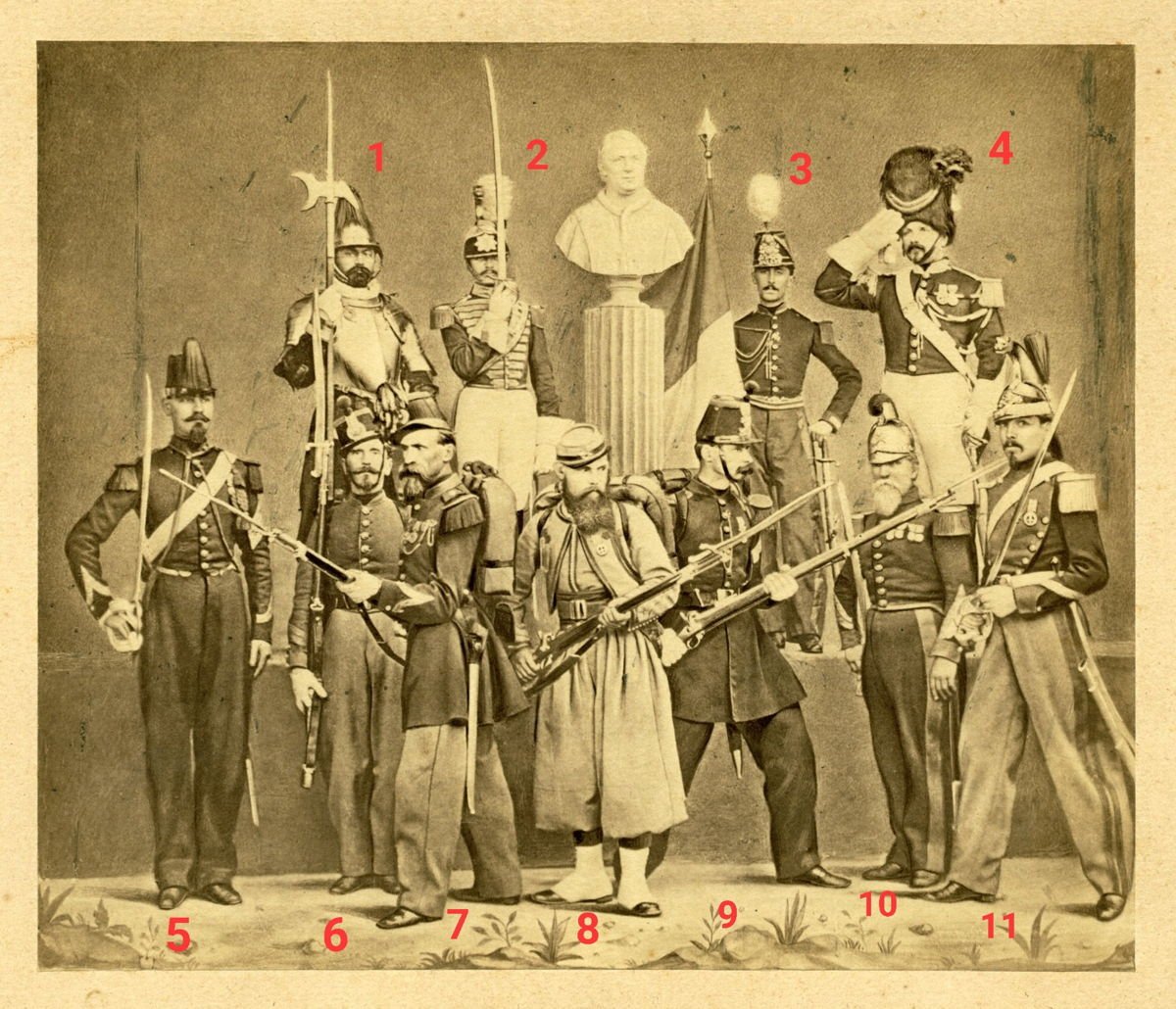
"Bless me, Monsieur I’Abbe, for we shall never meet again on earth.”
At 8:30 am the 3500-man left column commanded by Pimodan set off. A flag that was flown at the Battle of Lepanto was removed from the Holy House and was carried ahead of the Papal forces.
21/50
At 8:30 am the 3500-man left column commanded by Pimodan set off. A flag that was flown at the Battle of Lepanto was removed from the Holy House and was carried ahead of the Papal forces.
21/50

30 minutes later the 3300-man center column commanded by Lamoricière followed. The orders for leaving weren’t communicated well so most of the men left without eating breakfast.
The Italians were caught by surprise. They had poor intelligence and did not expect a fight on
22/50
The Italians were caught by surprise. They had poor intelligence and did not expect a fight on
22/50
the 18th, nor did they believe the river by the left flank was fordable. The first shots of the battle started at 9:20 am when the Swiss in the left column engaged with Bersaglieri defending the area between the river and the lower farm.
23/50
23/50

The Italians sent in reinforcements from the Upper Farm and counter-attacked, fierce hand to hand fighting broke out. An Irish company that was in charge of moving artillery pieces was targeted while crossing the river. But managed to stave off the attack and kill a
24/50
24/50

Bersaglieri officer. Overwhelmed the Piedmontese withdraw to the lower than Upper Farm. There was a temporary halt in the Papal advance when the Swiss Foreign Carabineers were accidently fired upon by the 2nd Indigenous Cacciatori. However, no fratricide resulted from
25/50
25/50

the incident. By 10:30 am the Swiss and the Franco-Belgians had secured the Lower Farm. Col. Pimodan wanted to keep up the fast-paced tempo of the advance. After the lower farm was secured, he gave his troops only a few minutes rest while they reorganized and started
26/50
26/50

their attack uphill towards the Upper Farm. Charging through open terrain while being fired upon by the Italians hiding behind cover of the Upper Farms walls, they Pontifical troops advanced. They reached the Upper Farm and hand to hand fighting broke out.
27/50
27/50
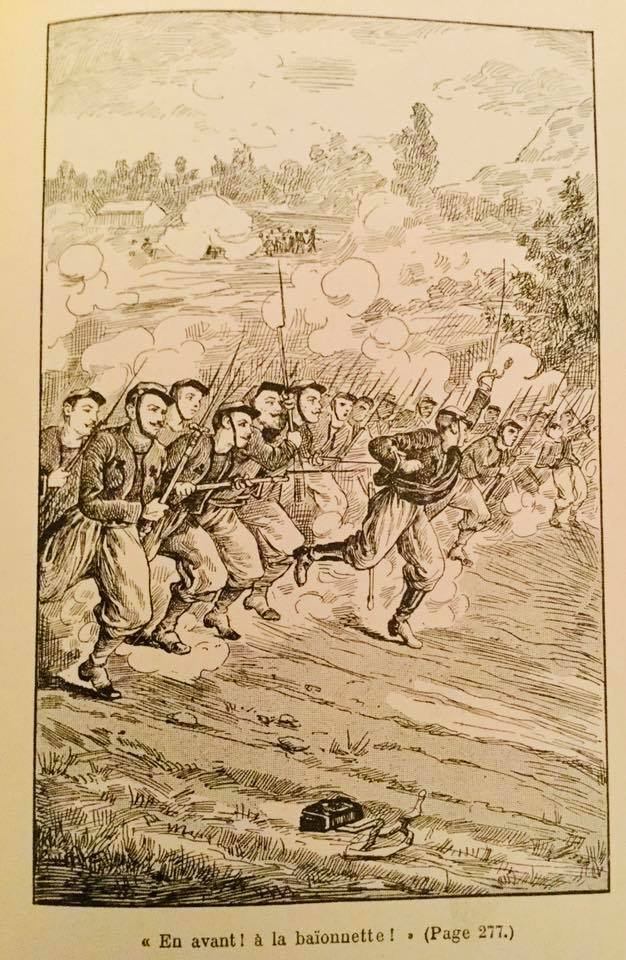
Through the bravery of Capt. Charette and the Franco-Belgian Battalion the Bersaglieri retreated to the top of the hill.
As the Pontificals were about the reach the summit of the hill, two Battalions of Italian reinforcements arrived and poured over the crest of the hill.
28/50


As the Pontificals were about the reach the summit of the hill, two Battalions of Italian reinforcements arrived and poured over the crest of the hill.
28/50


This stopped the Papal Advance in their tracks, Col. Pimodan on horseback attempted to rally his troops. They briefly regained their momentum.
However, he was shot in the jaw, then foot, and finally his chest. Each time he shouted “Courage, my children, God is with us!”
29/50
However, he was shot in the jaw, then foot, and finally his chest. Each time he shouted “Courage, my children, God is with us!”
29/50

he fell from his horse and was taken back to the Lower Farm. As more Italian reinforcements poured over the hill the Papal troops lost their momentum. They retreated back to the Upper Farm which was now on fire.
Meanwhile, Lamoricière’s column had successfully forded the
30/50
Meanwhile, Lamoricière’s column had successfully forded the
30/50

river, he was having trouble making out what was happening on the hill so he rode with a few staff officers to the Lower Farm to investigate. There he saw Col. Pimodan on a stretcher pleading to be given the honor of dying on the battlefield instead of an aid station.
31/50
31/50

This sight, the unwillingness to abandon his comrades, along with the belief that the battle could be won made Lamoricière abandon his original plan of getting as many units escape to Ancona as possible. Instead, he wanted a total victory. He ordered his column to the
32/50
32/50

Lower Farm and the remainder of Pimodan’s column to reinforce the Upper Farm.
As the center column moved to the Lower Farm, they took fire from Piedmontese Artillery. The 1st Foreign Infantry Regiment panicked, threw down their arms, and ran. This panic quickly spread
33/50
As the center column moved to the Lower Farm, they took fire from Piedmontese Artillery. The 1st Foreign Infantry Regiment panicked, threw down their arms, and ran. This panic quickly spread
33/50
to the other units of the center column and most fled. Within minutes and without firing a shot the central column collapsed.
The panic then spread to the second echelon of Pimodan’s column. The2nd Cacciatori Battalion upon seeing the intense fighting at the farm,
34/50
The panic then spread to the second echelon of Pimodan’s column. The2nd Cacciatori Battalion upon seeing the intense fighting at the farm,
34/50

turned and ran, this then infected the cavalry squadrons which also ran. Lamoricière and his senior officers attempted to rein in the panic but to no avail.
The situation was becoming increasingly desperate. Lamoricière ordered a retreat back to the Lower Farm.
35/50
The situation was becoming increasingly desperate. Lamoricière ordered a retreat back to the Lower Farm.
35/50
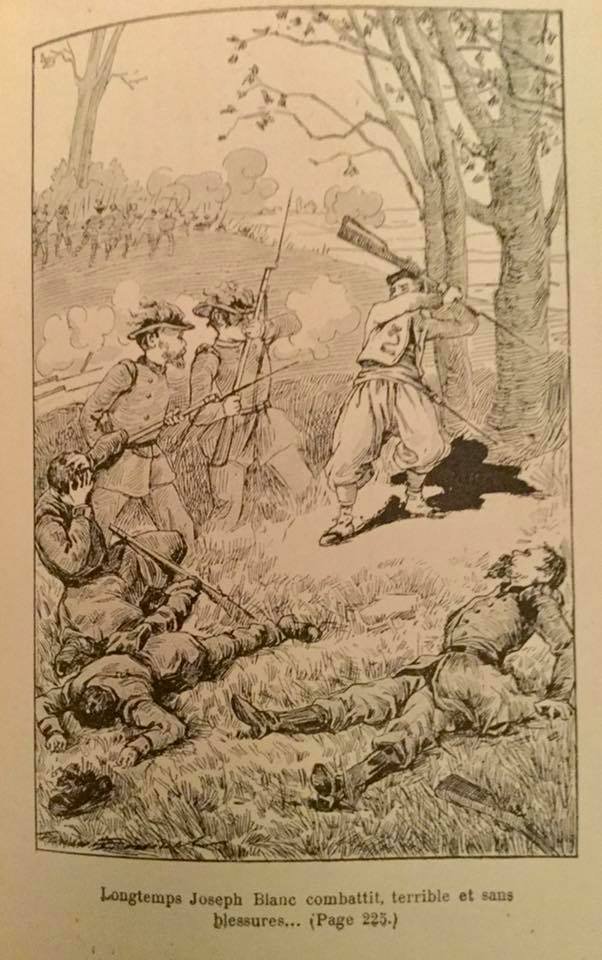
The last of Pimodans reserve, a battalion of Austrian bersaglieri came up and reinforced them. However it would not be enough to push back the Piedmontese.
Trying to salvage as much of his original plan as much as possible Lamoricière left to find elements of his command
36/50
Trying to salvage as much of his original plan as much as possible Lamoricière left to find elements of his command
36/50

and scattered troops to rally them on the road to Ancona. Colonel Goudenhoven was left in charge and he quickly realized there was little they could do, so he ordered a retreat back to Loreto.
In the confusion of the retreat two dozen Franco-Belgian soldiers alongside
37/50
In the confusion of the retreat two dozen Franco-Belgian soldiers alongside
37/50

several wounded soldiers including Col. Pimodan were left in the Lower Farm. They fought off 3 assaults on their position and held out for more than an hour after all other Pontifical units had left. They finally surrendered the house around 2:00 pm.
38/50
38/50

When the remainder of Pimodan’s forces reached Loreto defensive positions were quickly set up. Of the 6800 men who departed earlier that morning only 2000 returned, most of the rest were captured. There were so many casualties that the Sanctuary of the Holy House of Loreto
39/50


39/50

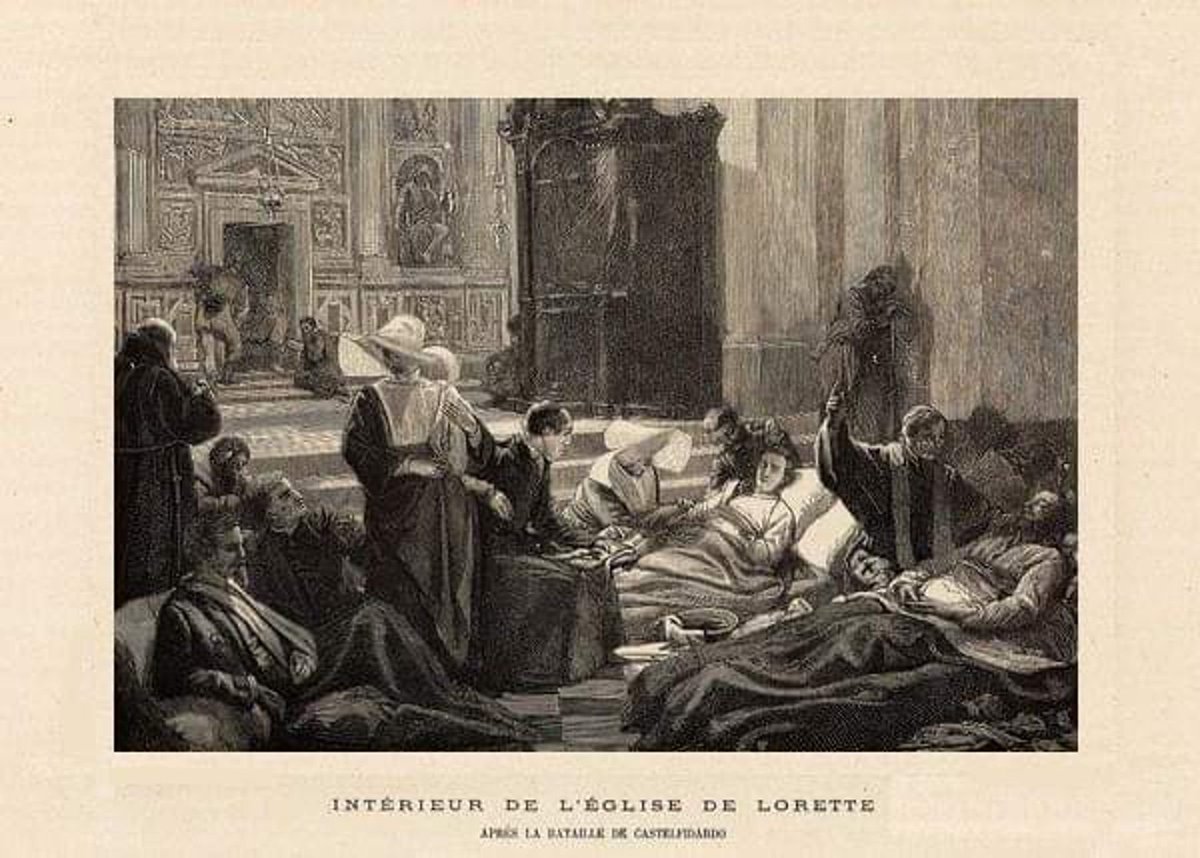
was turned into a temporary hospital. The next morning the Papal forces surrendered Loreto with the agreement that they be given the honors of war and Officer’s allowed to retain their swords
Lamoricière meanwhile had managed to gather around 450 men and they quickly made
40/50


Lamoricière meanwhile had managed to gather around 450 men and they quickly made
40/50


their way to Ancona. However, along the way they were discovered Italians. Most of the small Papal force held off the attack while Lamoricière, a few of his aides, and cavalry troopers escaped to Ancona. Upon entering the city Lamoricière said “I no long have an army”
41/50
41/50
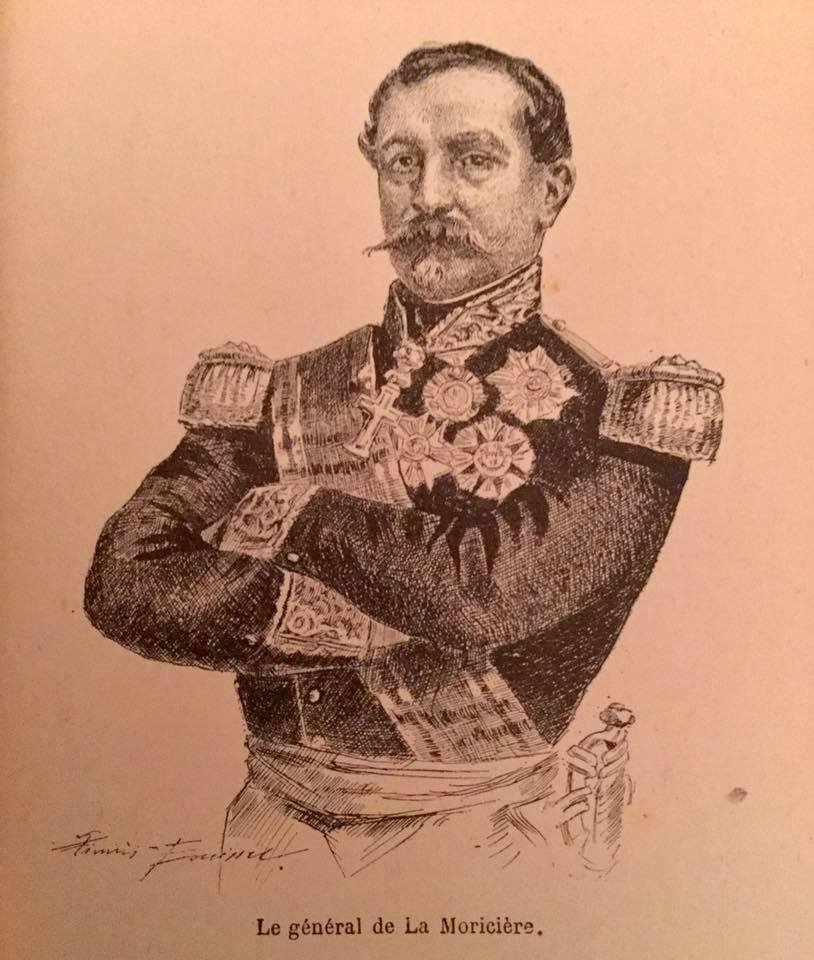
The battle was over, the loss was so catastrophic that it came to be known as a massacre and the fallen Papal soldiers, Martyrs. The field was filled with so many noble Catholic youth of France that an Italian General commented
42/50
42/50

"you would think this was a list of invites for a ball given by Louis XIV!"
The Papal Army lost 88 men, including Col. Pimodan and had more than 400 wounded. The Piedmontese lost 62 men and 140 wounded. There are many reasons for the Papal loss. For example their weapons
43/50
The Papal Army lost 88 men, including Col. Pimodan and had more than 400 wounded. The Piedmontese lost 62 men and 140 wounded. There are many reasons for the Papal loss. For example their weapons
43/50
were far less advance as they had mostly smooth bore rifles and artillery compared with the new rifle barreling the Italians had.
Additionally, while the Papal forces had superior numbers, with the Italians in the battle numbering only 2500, the Papal forces failed to
44/50
Additionally, while the Papal forces had superior numbers, with the Italians in the battle numbering only 2500, the Papal forces failed to
44/50
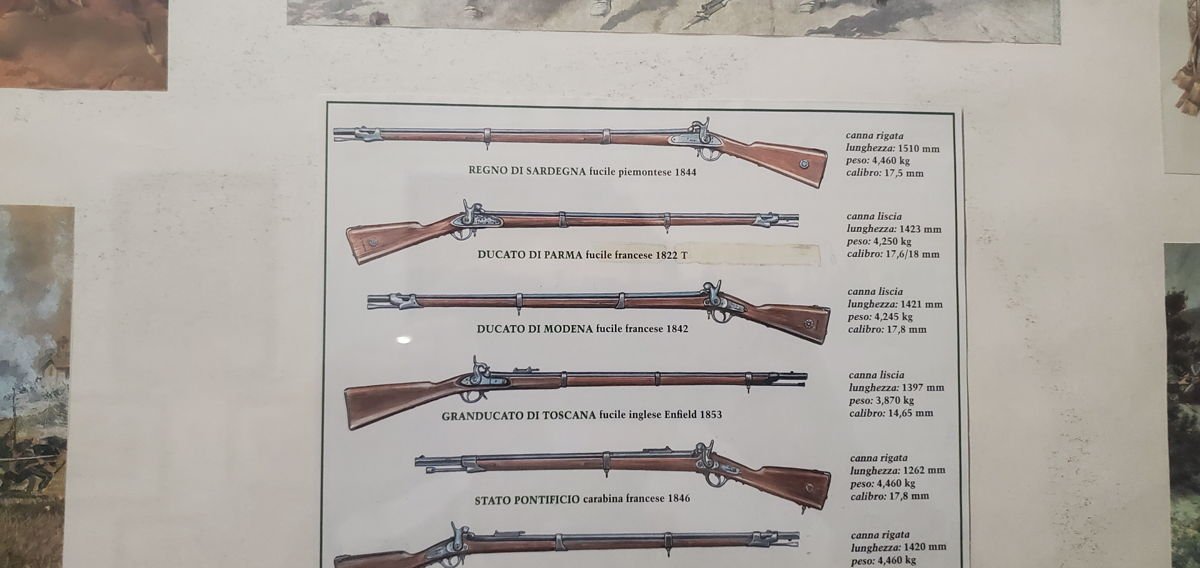
capitalize on their advantage. Instead, by splitting up their forces into columns and then additionally into smaller elechons most engagements during the battle rarely obtained a numerical Papal advantage.
The Papal Army was also far less experienced and trained,
45/50
The Papal Army was also far less experienced and trained,
45/50

especially when compared to the Sardinian Army which was one of the most well trained in the world. There were also many tactical errors from Lamoricière such as choosing to commit his column to the battle instead of escaping with the baggage train. With the battle lost
46/50
46/50
Ancona received little reinforcements. The siege of the city began that day, no help from any Catholic powers arrived. On the 29th Ancona and the last of the Papal forces surrendered. Thus, ending the war and with it the reduction of the Papal States to the Lazio region.
47/50


47/50
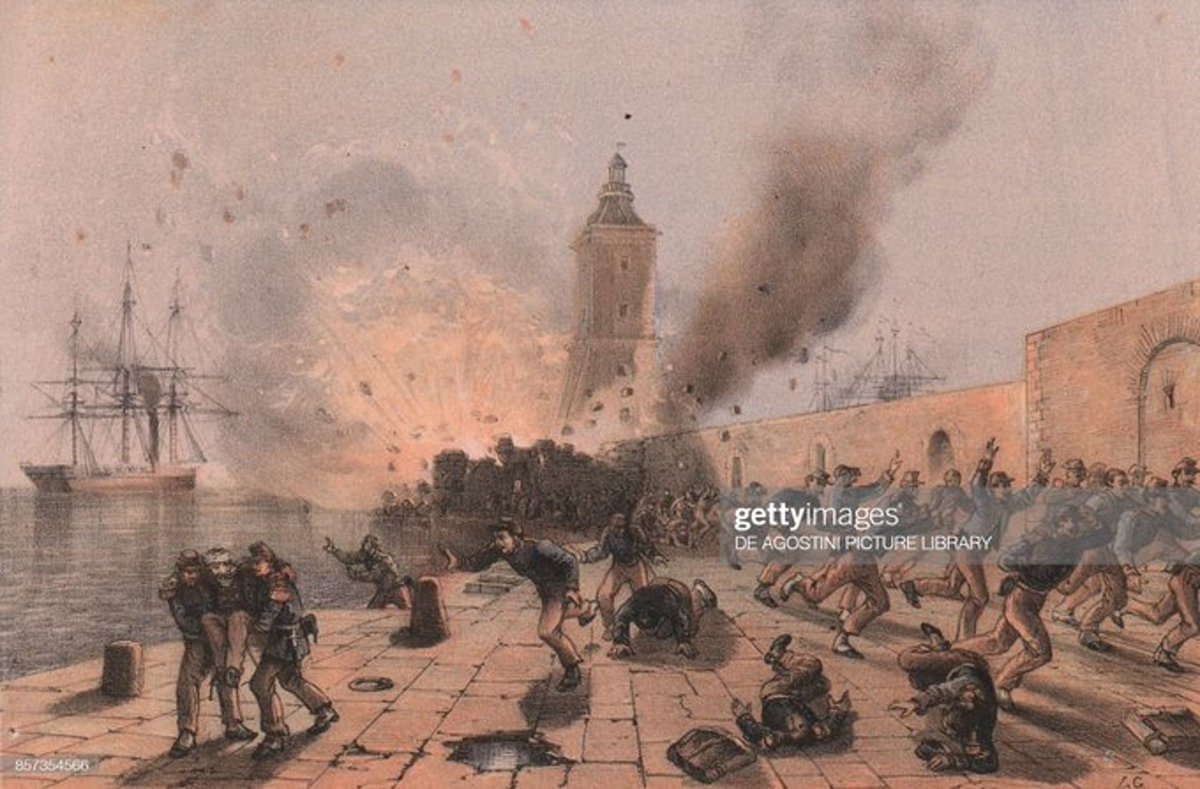

Despite the terrible loss, Bl Pope Pius IX was very thankful to the men who defended him. He awarded the soldiers who participated in the 1860 campaign with the Pro Petri Sede medal. More information can be found on the medal in the thread below
...
48/50twitter.com/PapalZouaveUS/s
...
48/50twitter.com/PapalZouaveUS/s
Many who died were considered Martyrs by their fellow soldiers. Their bravery would be well remembered over the course of the next decade as the Papal Army continued to defend the Papal States until the fall of Rome on Sep. 20 1870.
49/50
49/50
One of the Papal Zouaves who died from the battle even had a packet prepared by his diocese to champion his cause for Sainthood. To learn more about Joseph-Louis Guérin please so the thread below for more information.
50/50
...twitter.com/PapalZouaveUS/s
50/50
...twitter.com/PapalZouaveUS/s
Please pray for the repose of the souls of the brave soldiers who gave their lives defending Bl. Pope Pius IX
Eternal rest grant unto them, O Lord, and let perpetual light shine upon them. May the souls of all the faithful departed, through the mercy of God, rest in peace.
Amen

Eternal rest grant unto them, O Lord, and let perpetual light shine upon them. May the souls of all the faithful departed, through the mercy of God, rest in peace.
Amen

• • •
Missing some Tweet in this thread? You can try to
force a refresh





